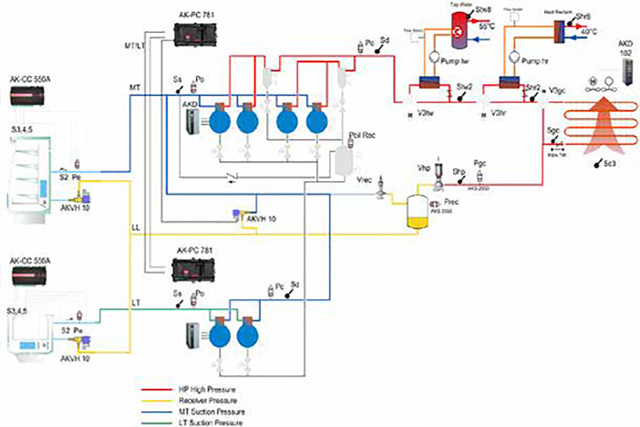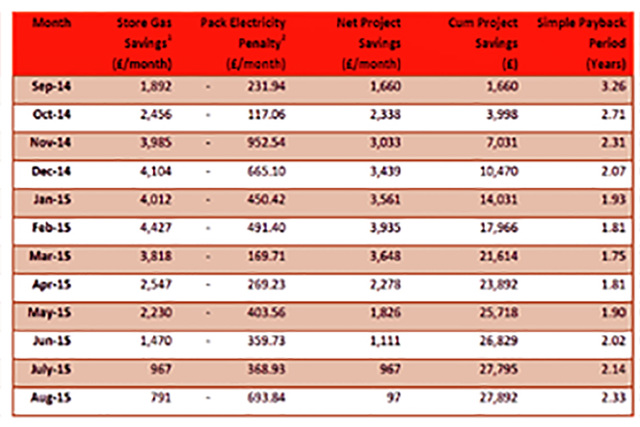The heat reclaim potential depends on the climate conditions, and so far CO2 refrigeration with heat reclaim has mostly been applied in colder climates. With new technologies, however, heat reclaim for utility water is becoming more widespread in warmer climates as well.
When it comes to transcritical systems with heat reclaim, we have only seen the tip of the iceberg. In future, supermarkets will not only cover their own heating demands by using the surplus heat of transcritical CO2, they will also be able to deliver heat to the district energy grid. The obvious advantages are fast payback times, typically under 2.5 years, and reduced emissions that make heat export from supermarkets very attractive for all akeholders.
There is no reason to wait – the required technologies are widely available today. This article will make the case for transcritical CO2 solutions with heat reclaim.
Part of the Energy Smart Grid
Supermarkets can easily fulfill their own heating demand, and they can do more than that. Supermarkets can play an important role in the smart energy grid, delivering heat to the local district energy network.
With only minor investments, the supermarket can be connected to the local district energy network and the supply of reclaimed heat can generate yet another revenue stream from the store. The first experiments with grid integration in Denmark have returned pay-back times of 1-2 years due to special subsidies; without subsidies, the payback time is still short, estimated 3-4 years.
In many markets, the lack of business models and current regulation still inhibit a more widespread interest in transferring the surplus heat from the supermarkets to the district energy network.


